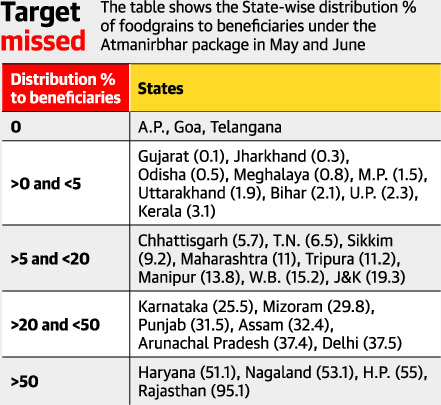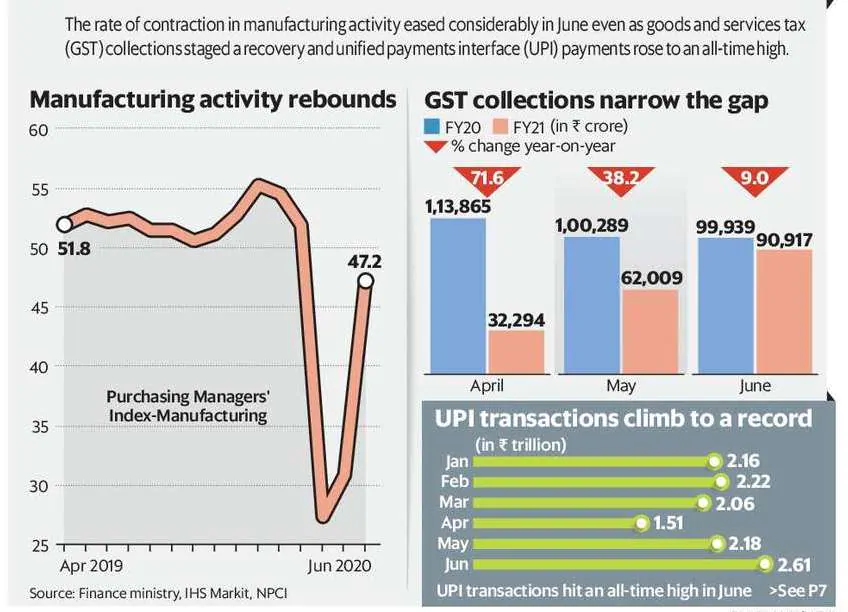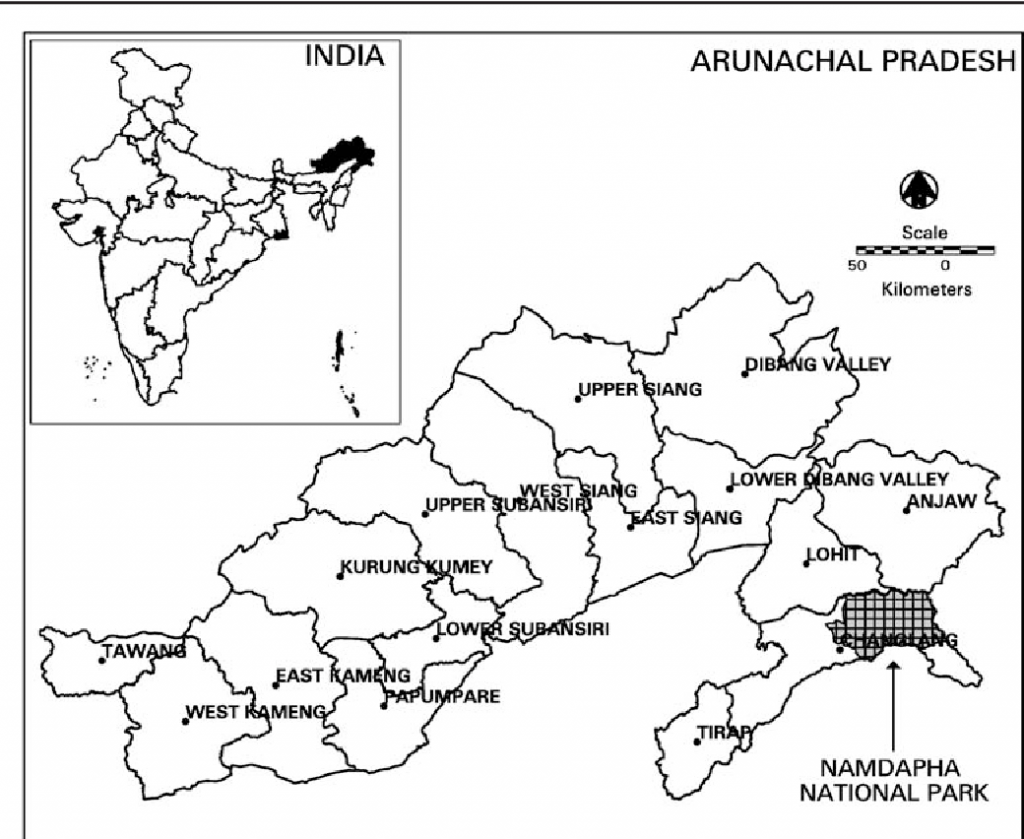Contents
- Migrant foodgrain scheme reached less than 15% of target
- UAPA: India designates Khalistani group links as terrorists
- Data theft, security issues key in selecting 5G vendors
- World Bank approves $750 Million to aid MSMEs
- GST mop-up point to a pickup in economic activity
- Ministry reconstitutes Central Zoo Authority
- Two more species added to India’s list of butterflies
MIGRANT FOODGRAIN SCHEME REACHED LESS THAN 15% OF TARGET
Focus: GS-III Indian Economy
Why in news?
The Pradhan Mantri Garib Kalyan Anna Yojana (PMGKAY) scheme to provide free rations to eight crore migrants under the Aatmanirbhar package reached less than 15% of its target beneficiaries, according to data provided by the Food Ministry
Details

- The PMGKAY Scheme was announced by the Union Finance Minister to support migrant workers going hungry without ration cards, but the Centre had left it to the States to identify such people.
- Overall, food grains were distributed to 15% of the estimated eight crore beneficiaries in May 2020, and in June 2020 approximately only 11.6%, received rations.
- Telangana lifted its entire allocation of grain under the Aatmanirbhar scheme from the Central pool, but did not distribute it to any beneficiary at all.
- On the other end of the scale, Rajasthan distributed grain to almost 95% of its estimated target.
Explanation?
- The food minister said that the State governments have not distributed the full component of food allocated under the Aatmanirbhar package, as they did not have that many migrants in need.
- States have communicated in writing, as well as during weekly reviews, the estimated number of migrants in their States, identified through de-duplication of Aadhaar.
- The Ministry has issued directions for the States to immediately begin lifting the extra allocation of food grains from Central warehouses, so that they do not face any distribution hurdles during the monsoon season.
Recently in news: Click Here to read more about the PMGKAY scheme extension (1st Article)
-Source: The Hindu
UAPA: INDIA DESIGNATES KHALISTANI GROUP LINKS AS TERRORISTS
Focus: GS-II Governance, GS-I History, Prelims
Why in news?
- The Ministry of Home Affairs (MHA) designated nine more individuals linked to separatist Khalistani groups as “terrorists” under the amended UAPA Act.
- The UAPA as amended in 2019 gave the MHA the power to designate individuals as terrorists.
What is Khalistan movement?
- The Khalistan movement is a Sikh separatist move
- ment seeking to create a homeland for Sikhs by establishing a sovereign state, called Khalistān in the Punjab Region.
- The proposed state would consist of land that currently forms Punjab, India and Punjab, Pakistan along with other areas of both countries, including Khyber Pakhtunkhwa, Balochistan and Sindh in Pakistan; and Haryana, Himachal Pradesh and parts of Jammu and Kashmir, and Rajasthan in India.
History
- The declaration of the Khālsā by Gurū Gobind Singh in 1699 and the religio-political vision that came with it fired the Sikh imagination with the belief that it was their God-given right to rule the Punjab.
- In 1710, under the leadership of Bandā Singh Bahādur Sikh forces captured Sirhind, the most powerful Mughal administrative center between Delhi and Lahore.
- After the subsequent rapid decline of the Khālsā Rāj and its final loss to the British (1849), many Sikhs still hope that the Khālsā Raj would yet return in some form.
- In the protracted negotiations that preceded the partition of the Punjab in 1947 the idea of an independent Sikh state figured prominently.
- The Sikh population’s lack of numerical strength in relation to other residents of the Punjab made this an unviable proposition, but it has resurfaced in various forms since.
- In the 1970s and ’80s a violent secessionist movement to create Khalistan paralyzed the Punjab for a decade.
Attached violence
- The movement reached its zenith in the late 1970s and 1980s when the secessionist movement caused large-scale violence among the local population, including the assassination of PM Indira Gandhi and the bombing of Air India Flight 182 which killed 329 passengers.
- There is some support within India and the Sikh diaspora, with yearly demonstrations in protest of those killed during Operation Blue Star.
Operation Blue Star
- Operation Blue Star was the codename of an Indian military action carried out between 1 and 8 June 1984 to remove militant Sikh leader Sant Jarnail Singh Bhindranwale and his followers from the buildings of the Harmandir Sahib (Golden Temple) complex in Amritsar, Punjab.
- The decision to launch the attack rested with Prime Minister Indira Gandhi.
- The military action in the temple complex was criticized by Sikhs worldwide, who interpreted it as an assault on the Sikh religion.
- Many Sikh soldiers in the army deserted their units, several Sikhs resigned from civil administrative office and returned awards received from the Indian government.
- Five months after the operation, on 1984, Indira Gandhi was assassinated by her two Sikh bodyguards.
Unlawful Activities Prevention Amendment Bill, 2019
The original Unlawful Activities Prevention Act, 1967, dealt with “unlawful” acts related to secession; anti-terror provisions were introduced in 2004.
It provides special procedures to deal with terrorist activities, among other things.
Key Provisions of the Amendment
The Bill amends the Unlawful Activities (Prevention) Act, 1967 (UAPA) and additionally empowers the government to designate individuals as terrorists on the same grounds.
Under the Act, the central government may designate an organisation as a terrorist organisation if it:
- commits or participates in acts of terrorism
- prepares for terrorism
- promotes terrorism
- is otherwise involved in terrorism
The word “terror” or “terrorist” is not defined.
However, a “terrorist act” is defined as any act committed with the intent –
- to threaten or likely to threaten the unity, integrity, security, economic security, or sovereignty of India
- to strike terror or likely to strike terror in the people or any section of the people in India or in any foreign country
The central government may designate an individual as a terrorist through a notification in the official gazette.
- The Bill empowers the officers of the National Investigation Agency (NIA), of the rank of Inspector or above, to investigate cases.
- Under the Act, an investigating officer can seize properties that may be connected with terrorism with prior approval of the Director General of Police.
Some Concerning Points about designation of someone as terrorist
- The government is NOT required to give an individual an opportunity to be heard before such a designation.
- At present, legally, a person is presumed to be innocent until proven guilty.
- In this line, an individual who is convicted in a terror case is legally referred to as a ‘terrorist’.
- And those suspected of being involved in terrorist activities are referred to as ‘terror accused’.
- The Bill does NOT clarify the standard of proof required to establish that an individual is involved or is likely to be involved in terrorist activities.
- The Bill also does not require the filing of cases or arresting individuals while designating them as terrorists.
How can the names be removed?
- Application – The Bill seeks to give the central government the power to remove a name from the schedule when an individual makes an application.
- The procedure for such an application and the process of decision-making will also be decided by the central government.
- If an application filed is rejected by the government, the Bill gives the person the right to seek a review within one month of rejection.
- Review committee – Under the amendment Bill, the central government will set up a review committee.
- It will consist of a chairperson (a retired or sitting judge of a High Court) and 3 other members.
- It will be empowered to order the government to delete the name of an individual from the schedule that lists “terrorists”, if it considers the order to be flawed.
- Apart from these two avenues, the individual can also move the courts challenging the government’s order.
-Source: The Hindu
DATA THEFT, SECURITY ISSUES KEY IN SELECTING 5G VENDORS
Focus: GS-III Science and Technology, Internal Security
Why in news?
With the US communications department tagging Chinese telecom vendors Huawei and ZTE as a “national security risk” it points to concerns over data theft and security implications shaping the crucial call on deciding 5G vendors for India.
Explaining the Concerns
Fifth-generation telecom (5G) technology is absolutely crucial for accelerating and deepening the Digital India campaign. But considerations of integrity of data of Indian citizens and national security should be given the utmost importance when the decision is made.
The stance may have serious implications for the Chinese giant Huawei, which has long struggled to quell the rampant suspicion about it being an arm of the Chinese PLA, as well as ZTE.
Views of other countries

Strong suspicions about Huawei being a PLA auxiliary and the opaqueness of its finances has hamstrung the company in other countries as well.
The UK signalled a tougher line against Huawei, while Australia had imposed a ban on Chinese 5G equipment even before the US action. Others such as Canada and Germany too are looking at other vendors, although Huawei has not been banned yet.
Indian Government’s focus on Digital India and the criticality of 5G for delivering high-speed services, the government’s stance might spell an advantage for Huawei and ZTE’s competitors.
Click Here to read more about 5G
-Source: Times of India
WORLD BANK APPROVES $750 MILLION TO AID MSMES
Focus: GS-III Indian Economy
Why in news?
The World Bank has approved $750-million loan to increase flow of finance to micro, small, and medium enterprises (MSMEs) in India.
The bank has lent $5.13 billion to India in the last year —the highest in a decade.
Details
- India’s MSME sector, which contributes 30% of India’s GDP and 40% of exports, is currently facing severe stress.
- The World Bank’s MSME Emergency Response programme will address the immediate liquidity and credit needs of some 1.5 million viable MSMEs to help them withstand the impact of the current shock and protect millions of jobs.
- This cash flow shortage is worsened by constraints to accessing finance, potentially creating solvency problems.
- The MSME sector is central to India’s growth and job creation, and will be key to the pace of India’s economic recovery post covid-19.
- The immediate need is to ensure that the liquidity infused into the system by the government is accessed by MSMEs.
Recently in news
$1-billion emergency support was announced for immediate support to India’s health sector followed by another $1-billion project to increase cash transfers and food benefits to the poor and vulnerable, including a more consolidated delivery platform—accessible to both rural and urban populations across state boundaries.
Click Here to read more about the World Bank and the recent loans
-Source: Livemint
GST MOP-UP POINT TO A PICKUP IN ECONOMIC ACTIVITY
Focus: GS-III Indian Economy
Why in news?
Manufacturing activity in India appeared to stabilize from historic lows and indirect tax collections bounced back in June, suggesting a slow recovery from the collapse in demand because of the coronavirus pandemic.
Recovery in sight?
- Although manufacturing activity shrank for a third straight month in June, it was slower than the previous months.
- The latest economic data indicate that the worst may be over and India is on the road to a slow recovery. But these assumptions will only hold if a second wave of coronavirus infections does not sweep the country.
- The manufacturing Purchasing Managers’ Index (PMI) increased to more than 45 in June from around 30 in May, signalling faster normalisation in factory activity since the lockdown measures were eased.
- Several indicators including improved tractor sales and a normal monsoon suggest that the economy may gather further momentum.

Role played by tax collection
- Separately, data released by the finance ministry showed that gross GST receipts for June was just 9% below the roughly ₹1 trillion collected in the same month a year ago.
- While June showed a big improvement from what was collected in the previous two months, it is hard to decipher a month-wise revenue trend, given that the government has eased the tax payment schedule with an interest waiver, a big relief to businesses short of cash.
- An official statement from the finance ministry said GST collections for the June quarter was 59% of the revenue collected in the same quarter a year ago, which to some extent, irons out the uncertainties in monthly figures.
-Source: Livemint
MINISTRY RECONSTITUTES CENTRAL ZOO AUTHORITY
Focus: GS-III Environment and Ecology, Prelims
Why in news?
The Environment Ministry has reconstituted the Central Zoo Authority (CZA).
Central Zoo Authority (CZA
- The Central Zoo Authority (CZA) is the body of the government of India responsible for oversight of zoos.
- Central Zoo Authority is a Statutory Body whose main objective is to enforce minimum standards and norms for upkeep and health care of animals in India zoos.
- Zoos are regulated as per the provisions of Wild Life (Protection) Act, 1972 and are guided by the National Zoo Policy, 1992. The Wild Life Protection was amended in 1991 to establish the Central Zoo Authority.
- Apart from the chairman, it consists of 10 members and a member-secretary. Almost all of them are officials in the Environment Ministry and non-government experts are those who are wildlife conservationists or retired forest officers.
Click Here to read more about the Wildlife Protection Act
-Source: The Hindu
TWO MORE SPECIES ADDED TO INDIA’S LIST OF BUTTERFLIES
Focus: GS-III Environment and Ecology, Prelims
Why in news?
- Lepidopterists in Arunachal Pradesh have helped add two species to India’s expanding list of butterflies.
- The Striped Hairstreak was located in Myanmar border Myanmar while the Elusive Prince was found on the periphery of the Namdapha National Park.
- The findings from Arunachal Pradesh indicate the rich biodiversity of the State, the government thus, needs to focus on helping volunteers or citizen scientists by providing the support needed.
Details (Prelims Bits)
- The Striped Hairstreak, was first recorded by Japanese entomologists in Hainan province of China.
- Elusive Prince, has a Vietnamese connection and was thought to be the more familiar Black Prince found in the Eastern Himalayas.
Namdapha National Park

- Namdapha National Park (IUCN category II National Park) is a large protected area in Arunachal Pradesh of Northeast India.
- Namdapha was originally declared a Wildlife Sanctuary in 1972, then a National Park in 1983 and became a Tiger Reserve under the Project Tiger scheme in 1983 itself.
- The Namdapha flying squirrel is endemic to the park and critically endangered.
- There are a few settlements of Lisu tribal people within the park.
- With more than 1,000 floral and about 1,400 faunal species, it is a biodiversity hotspot in the Eastern Himalayas.
- The national park harbours the northernmost lowland evergreen rainforests in the world at 27°N latitude
-Source: The Hindu



